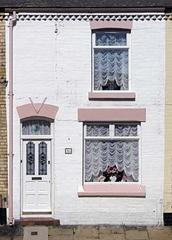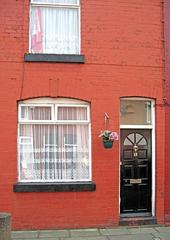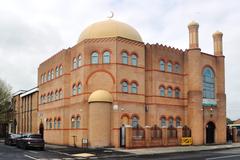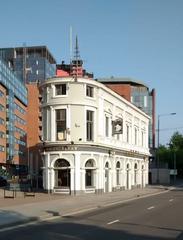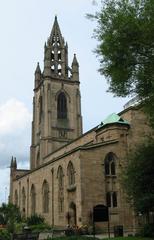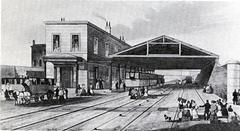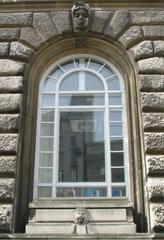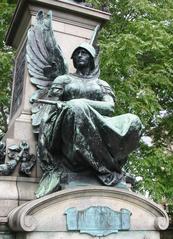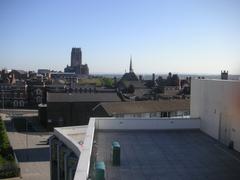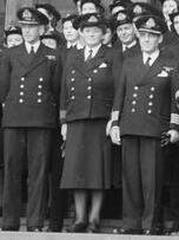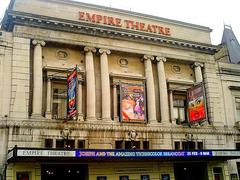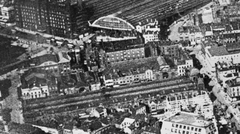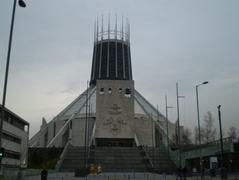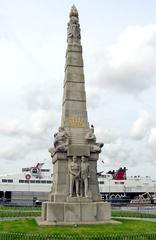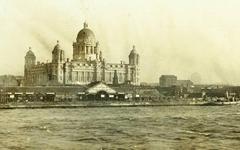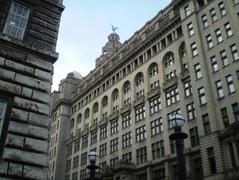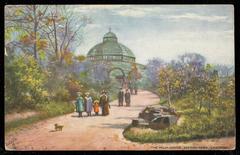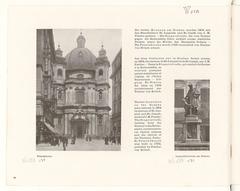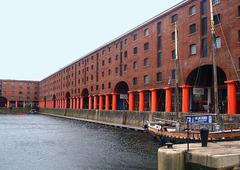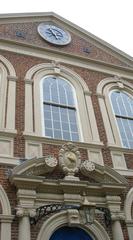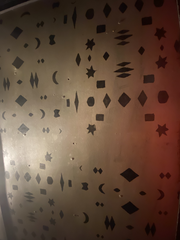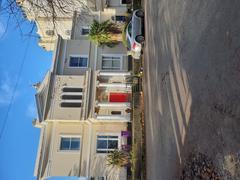South Catacomb Liverpool: Visiting Hours, Tickets, and Historical Sites Guide
Date: 14/06/2025
Introduction
Liverpool’s South Catacomb, a hidden gem of Victorian funerary architecture, is a poignant reminder of the city’s evolving social and cultural narrative. Primarily located at Anfield Cemetery—a Grade II-listed site inaugurated in 1863—this underground marvel was a product of 19th-century urban expansion and innovative burial solutions (Liverpool Echo). Its atmospheric corridors, ingenious coffin lifts, and Romanesque stonework are testaments to the city’s engineering prowess and the societal shifts of the era (Grange Association).
Additionally, Liverpool’s legacy of catacomb construction is echoed beneath the Anglican Cathedral on St. James’ Mount, further illustrating the city’s adaptation of European burial traditions (Liverpool Cathedral). This guide delves into the history, architecture, and visitor experience of the South Catacomb, offering comprehensive information on hours, tickets, accessibility, and nearby attractions. Whether you’re a history buff, architecture enthusiast, or curious traveler, this resource provides all you need to explore one of Liverpool’s most significant historical sites (VisitLiverpool).
Table of Contents
- Introduction
- Origins and Construction
- Architectural Features
- Historical Context and Significance
- Preservation and Restoration
- Visiting Information
- Special Events and Guided Tours
- Heritage Context: Catacombs in Liverpool and Beyond
- Frequently Asked Questions (FAQ)
- Key Dates and Figures
- Conclusion and Visitor Tips
- References
Origins and Construction
The South Catacomb is one of two Grade II-listed catacombs at Anfield Cemetery, established in response to Liverpool’s rapidly expanding population in the 19th century (Liverpool Echo). Built into former stone and sand quarries, the catacombs made use of the natural landscape to ensure stability and ventilation. The cemetery’s design, which included both Anglican and Roman Catholic chapels, promoted inclusivity among Liverpool’s diverse communities (Grange Association).
Architectural Features
The South Catacomb is characterized by:
- Barrel-vaulted ceilings
- Romanesque stonework
- Alcoves for up to 480 interments
- Staircases and coffin lifts for discreet, dignified lowering of coffins
- Ventilation shafts strategically placed for airflow and preservation
Funeral services were traditionally held in the upper chapel, after which coffins were lowered into the catacomb’s alcoves. The interplay of subdued natural light and monumental stonework creates a solemn, reflective atmosphere (Grange Association).
Historical Context and Significance
Liverpool’s population soared from 77,000 in 1801 to over 600,000 by 1900 (Wikipedia: History of Liverpool), resulting in overcrowded churchyards and public health concerns. The garden cemetery movement, exemplified by Anfield Cemetery, introduced park-like settings and innovative burial solutions. The South Catacomb was emblematic of these Victorian values, offering efficient space utilization and symbolic architectural features (Grange Association).
Preservation and Restoration
Changing attitudes toward burial and the rise of cremation led to the catacomb’s gradual decline. Neglect and structural issues became prevalent until recent conservation efforts—such as a £290,000 restoration funded by Historic England—ensured its stabilization and ongoing public access (Liverpool Echo).
Visiting Information
Hours and Tickets
- Visiting Hours: Open Wednesday to Sunday, 10:00 AM – 4:00 PM. Closed Mondays and Tuesdays.
- Tickets: Entry is free; donations are encouraged to support preservation. Guided tours are available on weekends and should be booked in advance through the Friends of Anfield or official channels.
Accessibility
- The catacomb features stairs and uneven surfaces. Visitors with mobility concerns are advised to contact the site ahead of time for assistance.
- Wheelchair access is limited due to the historic structure’s constraints.
Travel Tips
- Anfield Cemetery is accessible by bus and car, with parking on-site.
- Sturdy footwear is recommended, and visitors should consider bringing a flashlight for dimly lit areas.
Nearby Attractions
- Anfield Stadium
- Liverpool Anglican Cathedral
- St. James Cemetery
- Georgian Quarter with its renowned architecture (VisitLiverpool)
Special Events and Guided Tours
The Friends of Anfield regularly host guided tours, historical lectures, and photography workshops. Special themed tours—such as those focusing on Victorian mourning customs or Liverpool’s hidden histories—are occasionally offered and provide exclusive access to otherwise restricted areas (Veronika’s Adventure).
Heritage Context: Catacombs in Liverpool and Beyond
Liverpool’s catacombs are part of a wider British tradition of Victorian burial architecture, distinct from the ancient catacombs of Rome and Paris. Other notable British examples include the catacombs of Birmingham and St. James Cemetery in Liverpool (Grange Association; Facts.net). These sites are valued not only for their historical significance but also for their role in public education and remembrance.
Frequently Asked Questions (FAQ)
Q: Is there an entrance fee?
A: Entry is free, though donations for preservation are appreciated.
Q: What are the visiting hours?
A: Wednesday–Sunday, 10:00 AM–4:00 PM.
Q: Is the catacomb wheelchair accessible?
A: Accessibility is limited; contact the site for details.
Q: Are guided tours available?
A: Yes, on weekends and by advance booking.
Q: Can I take photographs?
A: Photography is permitted, but flash and tripods may be restricted.
Key Dates and Figures
- 1863: Construction of Anfield Cemetery and South Catacomb begins.
- 480: Intended maximum capacity of each catacomb.
- £290,581: Initial restoration cost, with significant funding from Historic England (Liverpool Echo).
- 20+: Number of listed heritage structures within Anfield Cemetery.
Conclusion and Visitor Tips
The South Catacomb at Anfield Cemetery stands as a unique convergence of Victorian innovation, social history, and architectural beauty. Visiting this site offers an immersive journey into Liverpool’s past—one that is both educational and evocative. For the best experience:
- Book guided tours in advance, especially during peak periods.
- Wear comfortable, sturdy shoes and dress in layers.
- Respect the solemn nature of the site and adhere to photography guidelines.
- Explore nearby historical attractions to enrich your visit.
Visitors contribute to the preservation of this extraordinary site by participating in tours, donating, and promoting responsible heritage tourism. Enhance your exploration with resources such as the Audiala app for audio guides and real-time updates.
References
- Stunning before and after images of Liverpool catacombs restoration (Liverpool Echo)
- Catacombs of Liverpool (Grange Association)
- History of Liverpool (Wikipedia)
- Official Website (Liverpool Cathedral)
- Liverpool Tourist Attractions (PlanetWare)
- Liverpool History and Cultural Values (UK Essays)
- Visitor Information Centres (VisitLiverpool)
- Best Guided Tours in Liverpool (Veronika’s Adventure)
- Guided Tours in Liverpool (VisitLiverpool)
- Official Visitor Information (VisitLiverpool)
- One Day in Liverpool Itinerary (One Day Itinerary)
- 33 Facts About Catacombs (Facts.net)
- Historic England Listing (Historic England)
- Liverpool Community Strategic Plan 2022-2032 (Liverpool Community Strategic Plan 2022-2032)
- Liverpool Tour Experiences (Liverpool Tour Experiences)
- Liverpool Biennial Info (Liverpool Noise)
